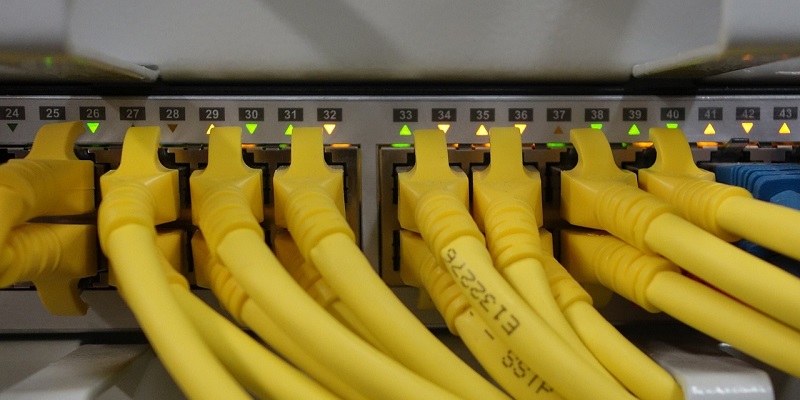In the world of computer networking, hubs serve as central connection points that enable devices to communicate with each other. This article provides a comprehensive overview of hubs, their role in network setups, the advantages they offer, their limitations, and the rise of switches as a superior alternative. As we delve into the intricacies of hubs, we will explore the impact of hub broadcasting on network congestion and performance, the function of hubs as data repeaters, and make a detailed comparison between hubs and switches.
Introduction to Hubs in Computer Networking
At their core, hubs function at the physical layer of the networking model. They are designed to handle simpler network configurations and are commonly employed in smaller setups. Hubs serve as central points that allow multiple devices to connect and communicate with one another.
Explanation of the role of hubs in network setups
Hubs act as the glue that holds networks together by providing a common connection platform for devices. When a device connected to a hub sends data, the hub broadcasts the data to all other connected devices. This broadcasting approach, though simple in nature, poses limitations in terms of network performance, congestion, and the ability to filter and forward data effectively.
Advantages of using hubs in smaller network configurations
One of the primary advantages of using hubs in smaller network setups is their simplicity and cost-effectiveness. Hubs require minimal configuration and can be easily set up by inexperienced users. Furthermore, due to their straightforward nature, hubs are ideal for basic networking needs where complex routing or filtering are not a requirement.
How hubs transmit data by broadcasting to all connected devices
Unlike switches, which selectively forward data based on the destination MAC address, hubs broadcast the data they receive to all connected devices. While this approach ensures that all devices receive the transmitted data, it also creates network congestion and reduces overall network performance, especially as the number of connected devices increases.
Limitations of hubs in filtering and forwarding data
One of the key limitations of hubs is their inability to filter or forward data based on the destination address. Unlike switches and routers, which can direct data packets to specific devices based on their destination, hubs lack this capability. Consequently, all devices connected to a hub receive data broadcasts regardless of their relevance, further contributing to network congestion.
Impact of hub broadcasting on network congestion and performance
The broadcasting nature of hubs can cause significant network congestion, leading to a decrease in overall performance. As more devices are connected to a hub, the frequency and volume of data broadcasts increase, causing bandwidth limitations and a shared collision domain. This shared domain reduces the efficiency and speed of data transmission, ultimately hindering the overall performance of the network.
The function of hubs as data repeaters is to amplify and regenerate signals
Apart from broadcasting data, hubs also act as data repeaters. They amplify and regenerate the signals they receive from one device before transmitting them to all the other connected devices. By boosting the signals, hubs ensure that data is transmitted across the network without a significant loss in signal strength.
Comparison of hub operation at the physical layer with switches at the data link layer
While hubs operate at the physical layer, switches operate at the data link layer of the networking model. This key distinction between the two devices allows switches to create separate collision domains, resulting in increased efficiency and improved network performance. Unlike hubs, switches selectively forward data based on the destination MAC address, reducing network congestion and enabling devices to communicate more efficiently.
The selective forwarding capability of switches is based on the destination MAC address
Switches analyze the destination MAC address of incoming data packets and use this information to forward packets only to the specific device intended to receive them. By forwarding data directly to the intended recipient and eliminating unnecessary broadcasts, switches reduce network congestion and greatly enhance performance.
The superior efficiency and performance of switches compared to hubs
Switches offer numerous advantages over hubs in terms of efficiency and performance. With their selective forwarding capabilities, switches significantly minimize network congestion, improve bandwidth utilization, and enhance overall network speed. As a result, switches have become the go-to choice for modern network configurations, leaving hubs behind as outdated technology.
Hubs have played an essential role in networking history by serving as central connection points for devices. However, their broadcasting approach, limitations in data filtering and forwarding, and adverse impact on network congestion and performance have paved the way for the rise of switches. With their selective forwarding capabilities and ability to create separate collision domains, switches have become the preferred choice for modern network setups, offering improved efficiency and enhanced performance. As technology continues to evolve, it is crucial for network administrators to recognize the limitations of hubs and embrace more advanced networking solutions to meet the growing demands of the digital era.

